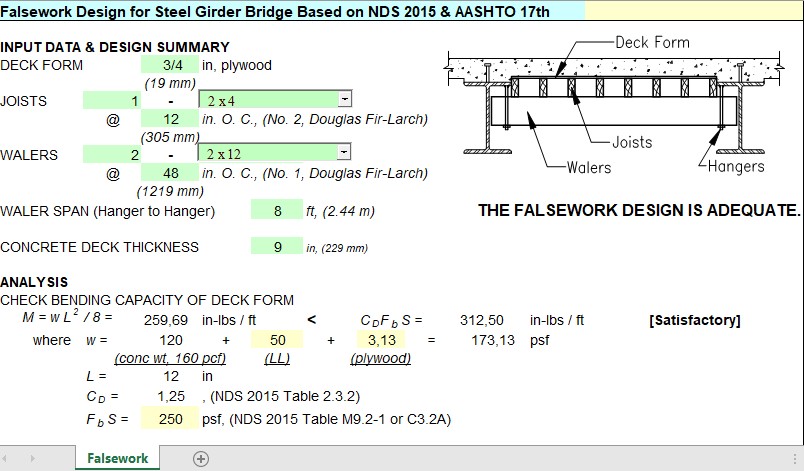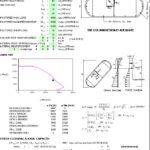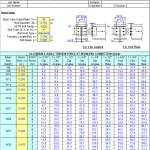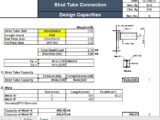
Falsework Design For Steel Girder Bridge Based on NDS and AASHTO Spreadsheet
11 June 2022Table of Contents
Falsework Design For Steel Girder Bridge Based on NDS and AASHTO Spreadsheet
Steel girder bridges are a cornerstone of modern infrastructure, seamlessly combining durability, cost-efficiency, and versatility. These bridges, which use horizontal steel beams (girders) to support loads, are favored for their ability to span significant distances and adapt to a variety of construction environments. Let’s explore their design, benefits, applications, and what makes them an integral part of today’s civil engineering projects.
What is a Steel Girder Bridge?
At its core, a steel girder bridge consists of horizontal steel beams supported by piers or abutments at each end. The girders bear the load of the deck and transfer it to the supports, creating a structure that’s both strong and adaptable. Depending on the project’s requirements, these girders can come in various shapes, including:
- I-Beams: Shaped like the letter “I”, these are among the most commonly used for their efficiency in bearing bending and shear forces.
- Box Girders: Enclosed, rectangular girders that are especially effective in resisting torsional forces.
- Plate Girders: Constructed by welding or bolting steel plates together, ideal for long spans.
Key Advantages of Steel Girder Bridges
1. High Strength-to-Weight Ratio
Steel is renowned for its exceptional strength-to-weight ratio, making it ideal for bridges that must support heavy traffic loads without excessive material usage. This efficiency helps reduce costs and construction time.
2. Durability and Longevity
Steel’s inherent resistance to environmental factors like wind, snow, and temperature fluctuations ensures these bridges remain functional for decades with proper maintenance. Modern coatings and treatments further enhance their resistance to corrosion.
3. Design Flexibility
Steel girders can be customized to suit a wide range of applications, whether it’s a simple overpass or an elaborate multi-span bridge crossing a major river. Their modular nature also makes it easier to transport and assemble components on-site.
4. Eco-Friendliness
Steel is one of the most recyclable materials in the world. At the end of a bridge’s lifecycle, the steel components can be repurposed, minimizing waste and environmental impact.
Applications of Steel Girder Bridges
Steel girder bridges are found in diverse settings, thanks to their adaptability and strength. Common applications include:
- Highway Overpasses: Providing safe crossings over busy roadways.
- Railway Bridges: Supporting the heavy loads and vibrations of trains.
- Pedestrian Walkways: Offering cost-effective solutions for urban and rural areas.
- River Crossings: Spanning water bodies with minimal environmental disruption.
Steps in Building a Steel Girder Bridge
- Site Analysis: Engineers assess the terrain, soil, and environmental factors.
- Design and Fabrication: Girders are designed to meet load and span requirements and fabricated off-site.
- Foundation Construction: Piers and abutments are built to anchor the bridge securely.
- Girder Installation: Girders are transported to the site and assembled, often using cranes or specialized equipment.
- Deck Placement: The bridge deck is laid over the girders, creating the surface for vehicles or pedestrians.
- Finishing Touches: Railings, lighting, and other features are added to complete the structure.
Challenges and Innovations in Steel Girder Bridge Construction
While steel girder bridges are robust, they aren’t without challenges. Corrosion, for instance, remains a concern, particularly in coastal or industrial areas. Innovations such as weathering steel and advanced protective coatings have significantly mitigated this issue.
Additionally, advances in prefabrication and automated welding have streamlined the construction process, reducing costs and improving quality control. Engineers are also leveraging software tools for precise modeling and stress analysis, ensuring every project meets stringent safety standards.
Conclusion
Steel girder bridges are an indispensable part of modern construction, offering unmatched strength, versatility, and longevity. Whether connecting urban centers or facilitating rural access, these bridges embody the ingenuity of civil engineering. As technology continues to advance, steel girder bridges will undoubtedly remain at the forefront of infrastructure development, bridging gaps and building connections worldwide.








